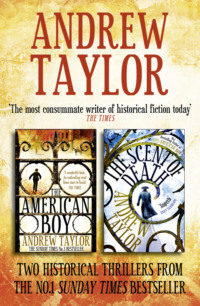
Полная версия
The World of Gerard Mercator: The Mapmaker Who Revolutionised Geography
The reasons behind his decision to leave Leuven will never be known for certain, nor will the reaction of his great-uncle, who had spent so many years building his own career in the Church and keeping quiet about his reformist ideas. Mercator was not expelled – he claimed later11 that he left “alone, and of my own volition” – and he kept open the option of returning to the university. Perhaps he had no clear idea at the time of what he would do or how he would live outside the walls of the College of the Castle. Yet in choosing Antwerp as his destination, he threw his religious belief, his academic future, even his life into jeopardy.
Chapter Six Doubts and Dangers
THE ROAD TO ANTWERP took Mercator through the town of Mechelen, about halfway from Leuven. There is no way of knowing whether he broke his journey then and even stayed for a brief while, but once he reached Antwerp he would certainly have heard about the books, maps, and ideas that were emanating from the town. Mechelen buzzed with intellectual life. The great port city of Antwerp was unchallenged as the mercantile and commercial center of the region, and Leuven was the finest academic institution of northern Europe, but fate and the whims of mighty families had made the little town of Mechelen, under its massive thirteenth-century Cathedral of St. Rombout, a hotbed of intellectual debate and creativity. There, away from the dead hand of the university authorities, the challenging ideas of a new world found expression.
In the early years of the sixteenth century, the town had gone through a brief period of glittering prosperity, home to the court of the young Charles V’s regent, Margaret of Austria. Charles himself, though born in Ghent, spent the first sixteen years of his life in Mechelen, surrounded by artists and philosophers such as the German engraver Albrecht Dürer, the humanist thinker Erasmus of Rotterdam, and Sir Thomas More, future chancellor of King Henry VIII of England. There were also spies, sending back information to their masters in the various courts of Europe about the humanist and occasionally anti-Catholic ideas that were expressed in the town. The composer and copyist Petrus Alamire* worked as a musician at the court and at various times supplied secret reports to Charles’s advisers and to King Henry in England.
Even though Mechelen’s glory was fading by the time Mercator traveled there in the early 1530s, the prosperity that came with such fame remained. Many businesses had been attracted to the town – among them, the burgeoning trade of printing. Mechelen was known as one of the most important centers in the Low Countries for the rapidly developing technology, and that in turn had encouraged geographers and mapmakers, giving it a widespread reputation as a place of geographic study.
Gemma Frisius and his circle were in touch with some of the town’s brightest intellectual flames, among them Frans Smunck, or Franciscus Monachus. If one of them sent Mercator to meet him, it would have been done discreetly, because Franciscus was a marked man; but it seems likely that the young student paid him several visits during his months in Antwerp. Franciscus was one of a religious community known as the Minorite Friars, who believed that by practicing complete self-denial, poverty, and humility, they would lead the world back to pure Christianity. They had been outspoken in their criticism of corruption in the Church for more than two centuries, and at various times, some of their leaders had gone so far as to question the legitimacy of the papacy itself, so that members of the order had been harassed, excommunicated, even burned at the stake. Such a history meant that, at best, the Friars were regarded with suspicion by the Inquisition and the university authorities – but Franciscus had a dangerous reputation of his own as well.
A few years before, he had constructed the first globe to be seen in the Low Countries, along with a short book and a world map. The globe has been lost, but his map shows that he was one of the most advanced geographic thinkers of his day. When it was produced in 1526, the American continents had gradually taken shape after Magellan’s voyage around the southern tip, and Franciscus had done his best to incorporate the latest discoveries of the expeditions that had been pushing northward up its western coastline. North America floundered in a blur of guesswork, depicted as an outgrowth of Asia, and a narrow channel was shown cutting the isthmus to South America, almost foreshadowing the Panama Canal 375 years later. Petrus Apianus had shown such a channel in his world map of 1520, but he had achieved nothing like the accuracy of Franciscus Monachus’s depiction of South America.

Franciscus Monachus’s worldview
British Library, London, Rare Books and Maps Collections
Franciscus’s thoughts ran in more perilous channels as well. By the time Mercator met him he was in his midforties and was known as a critic of the Aristotelian ideas that were at the center of religious orthodoxy, a believer in the importance of observation and measurement, and a man who challenged accepted wisdom. The message of his map had been that exploration, pushing westward to the Indies, was a profitable enterprise, while in his book he had derided “the rubbish of Ptolemy,” and by implication denied the truth of Aristotle’s view of a five-zoned world.
The jumble of fact, rumor, report, and conjecture that surrounded the emerging Americas, let alone Franciscus’s contemptuous view of the great Ptolemy, might have been meat enough for discussion between the two men, but their meetings seem to have ranged over the whole story of the Creation and the history of the world. These were more controversial studies by far than consideration of the coastline of the Americas.
For obvious reasons, Mercator never spoke about his time at Mechelen. How often he traveled there, when or even whether he saw Franciscus, how long he stayed if they did meet, who else might have been with them, were all secrets he took to his grave. Despite the dangers involved, the two men did write to each other, though their letters have been lost. Events a decade later suggest that the religious authorities, at least, believed that their contents would have been enough to damn Mercator as a heretic.
IN ANTWERP, days stretched into weeks, and weeks into months, and still Mercator stayed away from the university. He seems to have been deep in study, agonizing over the conflicts between the world he saw and the world Aristotle described, between reason and the Bible, no doubt debating whether he could return to an institution that stifled original thought as Leuven did. The pleas of the doctors and professors, instructing him to return, were all ignored. It is a mark of how much he was valued as a scholar that when he did eventually go back, they swallowed their pride and readmitted him into the university.1
The practicalities of making a living from his knowledge soon took hold. Even with the support of the University of Leuven, a delight in nature and in the order and proportion of Creation would never put bread on his table. Philosophy, as his friend and first biographer Walter Ghim put it, “would not enable him to support a family in the years to come.”2 By contrast, geography – globes and maps, like those he had probably seen in Franciscus’s cell among the Minorite Friars – was of continuing interest to wealthy sponsors. Mercator’s religious anxieties, his fascination with new ideas, his interest in the developing picture of the world were all genuine enough, but his later business career showed that he had a shrewd idea of where his own material interests lay – and it was not with the study of philosophy.
Mercator had been granted a license by the university to teach his own classes to young students, but private tuition was never more than a temporary way to support oneself. Through Gemma Frisius, he began to establish contacts and friendships of his own, developing his acquaintance with the young Antoine Perrenot de Granvelle, who was clearly a valuable patron for the future. Mercator needed little instruction in how to make himself agreeable to such an influential figure. “Your Grace,” “Your Reverence,” and “most reverend master” are among the phrases with which his correspondence with the young bishop of Arras was larded. Throughout his career, the effusive dedications of maps, globes, and books to powerful sponsors like Granvelle and his father would bear witness to Mercator’s passion for developing a network of influential friends. Such contacts were invaluable to a talented and ambitious man with a career to find and no wealth on which to establish it.
Gemma, with the help of a local goldsmith, Gaspard van der Heyden, had established a workshop in Leuven several years before, to design and make scientific instruments and globes, and in the early 1530s he invited Mercator to join them. Such an invitation was immensely flattering, a mark of considerable respect from someone whose good opinion was valuable, and Mercator had no hesitation in accepting it.
Chapter Seven Gemma’s Globe
UNDER THE INFLUENCE of the painters, philosophers, and thinkers who thronged his aunt’s court in Mechelen, the awkward young Charles V grew into a cultured and sophisticated patron of artists and craftsmen, with his own collection of paintings and works of art. Other leading figures in the Low Countries followed his example. Antoine de Granvelle built a collection in the archbishop’s palace in Mechelen that eventually included at least seven paintings by Peter Brueghel, already one of the most popular artists of his day.1 Prosperous local merchants and government officials bought paintings as well: The royal tax collector Niclaes Jonghelinck2 outdid even Granvelle with a collection of sixteen or more Brueghels, and when Jean Noirot, a former minister of the mint, was declared bankrupt in 1572, his creditors were able to auction off dozens of paintings by leading Flemish artists. Art was a flourishing business: The guild lists in sixteenth-century Antwerp show no fewer than 300 artists and 124 goldsmiths living and working in a city of around 150,000 people.
The emperor and his acolytes had, following decades of exploration, developed a passionate interest in science and discovery. Charles was fascinated by scientific and surveying instruments, partly for their practical use in assessing the contours of a battlefield, and partly as beautiful artifacts in their own right. Gemma and Gaspard had been making such instruments for several years. Gemma’s planimetrum for surveying the flat lowland landscape worked on very similar principles to those of the traditional astrolabes such as Columbus had used to measure the elevation of the Sun or the planets above the horizon, and thus calculate his latitude, and their workshop turned out both devices. Gemma also produced his own version of the astrolabe, known as the Catholicon, which simplified the calculations, as well as quadrants for telling the time by the Sun or the stars, various tools for mariners and surveyors, and armillary spheres, whose concentric rings around a central globe could be used to demonstrate the great circles of the heavens.
These were practical tools for navigation or study but also articles of intrinsic beauty. Manufacturing them, finely detailed and embellished as they were, was a job for highly skilled craftsmen capable both of precise engineering and delicate artistry – a challenge to goldsmiths and engravers, for the finest examples would command a high price from scholars and collectors alike.
Charles was also one of many wealthy collectors to keep a library hung with maps. The patent he granted to protect the first globe to come from the new workshop, and to prevent unauthorized copying of Gemma, Gaspard, and Mercator’s work,* noted with some satisfaction that it would record for the admiration of future generations “our own kingdom which, by the grace of God, encompasses many islands and territories practically unknown to any previous century.” Where the emperor and aristocracy led, the newly prosperous middle classes were eager to follow. Geography had captured the popular imagination, and the prosperity of Flanders meant there was money to be spent.
Hans Holbein’s famous picture The Ambassadors (1533) shows Jean de Dinteville, ambassador to London from the French king Francis I, posing grandly with his colleague, the bishop of Lavour. On the desk between them lie a terrestrial and a celestial globe, one depicting the Earth, the other the stars and the planets – incontrovertible evidence of their own wealth, power, and wisdom. The globe was as much a fashion statement as the ambassador’s richly furred gown, demonstrating the growing control of the environment that the maritime discoveries embodied – confident symbols of the outward-looking spirit of the age.

Hans Holbein the Younger’s The Ambassadors
National Gallery, London
The idea that the Earth was round had been widely accepted for centuries, but the full significance of it was just beginning to dawn as the trading implications of Vasco da Gama’s voyage to India and Ferdinand Magellan’s rounding of Cape Horn became plain. It was no longer a matter of abstract theory; vast fortunes could be and were being made by exploiting the fact that the Earth was a sphere.
Gemma and Gaspard both had some experience in the manufacture of globes. Gemma had produced one on his own in 1529 and included a sketch of it as the frontispiece to one of his textbooks of astronomy, while Gaspard had engraved the globe that Mercator’s friend and mentor Franciscus Monachus had designed in Mechelen. The first globe that the three men produced together in 1535 was a delicate structure of papieren bert, or cardboard – a flimsy sphere just over thirty-six centimeters in diameter, barely three millimeters thick, and coated with a thin layer of plaster for strength and smoothness. Onto that was pasted a map that Gemma had created, drawing, he said, on the works of Ptolemy, Marco Polo, and the Portuguese explorer Gaspar de Corte-Real, who had traveled along the coast of Newfoundland early in the century searching for slaves.
There was more than geography to the map. Gemma knew it would need the approval of Charles’s imperial court before he could offer it for sale, and he took care that Tunis, conquered by the emperor’s forces only a year earlier, should be clearly marked within his domains. That was a detail, a small piece of political flattery, but across the world, Gemma was anxious to draw on the latest information. It is clear from the one surviving copy of the globe, now in Vienna’s Österreichische Nationalbibliothek, that he consulted the reports of the Portuguese explorers in the East, so that the Indian peninsula, shriveled and flat on Ptolemy’s maps, showed its true triangular shape, and the island of Ceylon, whose size was so exaggerated by Ptolemy, was almost the correct shape and size. The outline of Africa, which only a few decades before had been a matter of conjecture, stretching southward to join the “great undiscovered land” around the South Pole, had been fixed by years of Portuguese trading. Where once had been tracts of empty space, dozens of islands, rivers, and countries were engraved by name – the Sinus Barbaricus (Bay of Savages), off the northeast coast, or the Trogloditica Regio (Land of the Troglodytes), stretching inland. The island of “Zandibar,” known by repute for centuries because of the spices that were transported by camel through Arabia to Europe, carried a regretful note – “This island not yet certainly explored” – and lay far out in the Indian Ocean, hundreds of miles from its true position.
Ferdinand Magellan’s voyage had brought back more details of the islands of Southeast Asia, although that area is so damaged on the Vienna globe that much of it is obscure. To the west, Gemma accepted the amazing piece of guesswork – if that is what it was – by Martin Waldseemüller, supported by more recent Spanish vessels sailing regularly to the west coast of the Americas, and drew in a wide Pacific Ocean separating an abbreviated America from the Asian landmass. Gemma’s map was a marked contrast both with the bulging Asian-American coastline of Franciscus Monachus and with Martin Behaim’s America-less world.
THE NEW TECHNIQUE OF PRINTING, as much as advances in geographic knowledge, had rendered Behaim’s unique, hand-painted globe of 1492 obsolete. By the early sixteenth century, most of the scores of printing houses scattered across northern Europe were producing not only typescript but also pictures and maps; the printed globe, like the book whose technology it had adapted, was sweeping across the continent. The roots of Mercator’s future commercial success lay in mastering this rapidly developing medium.
Printing had established itself in Leuven within twenty years after the first books came off the presses in Germany,* but the change from woodcuts to the more delicate copperplate in the mid – sixteenth century transformed the Netherlands into Europe’s unchallenged center for mapmaking and map publishing. The jewelry trade, which had developed from Antwerp’s traditional commerce in gold and precious stones, had attracted the finest line engravers in the world to the city. Gaspard was only one of many goldsmiths who had adapted his traditional skills to the rapidly expanding and profitable business of printing.
Конец ознакомительного фрагмента.
Текст предоставлен ООО «ЛитРес».
Прочитайте эту книгу целиком, купив полную легальную версию на ЛитРес.
Безопасно оплатить книгу можно банковской картой Visa, MasterCard, Maestro, со счета мобильного телефона, с платежного терминала, в салоне МТС или Связной, через PayPal, WebMoney, Яндекс.Деньги, QIWI Кошелек, бонусными картами или другим удобным Вам способом.








